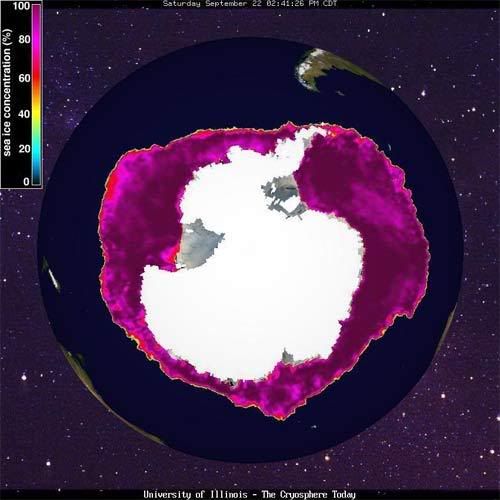Novas ilhas emergem no Árctico em cenário de degelo recorde
Ilhas até agora desconhecidas estão a aparecer numa altura em que o degelo árctico no Verão atinge níveis recorde. A nova geografia levanta questões sobre se as alterações climáticas estão a ultrapassar as projecções das Nações Unidas, dizem vários peritos.
Ursos polares e focas também sofreram este ano no arquipélago norueguês de Svalbard porque o gelo onde caçavam derreteu muito mais cedo do que o normal.
“Reduções na neve e gelo estão a acontecer a um ritmo alarmante”, comentou a ministra do Ambiente norueguesa, Helen Bjoernoy, numa conferência que começou ontem e 40 cientistas e políticos em Ny Alesund, a 1200 quilómetros do Pólo Norte. “Esta aceleração pode ser mais rápida do que o previsto” pelo painel climático da ONU este ano, disse aos jornalistas na conferência que termina na quarta-feira.
O Painel Intergovernamental para as Alterações Climáticas (IPCC, sigla em inglês), que reúne 2500 cientistas, disse em Fevereiro que o gelo de Verão poderá quase desaparecer no mar árctico até ao final deste século. O sobre-aquecimento dos últimos 50 anos é, “muito provavelmente” o resultado dos gases com efeito de estufa causados pela utilização dos combustíveis fósseis.
“Pode muito bem haver um Árctico sem gelo no meio deste século”, disse Christopher Rapley, director do British Antarctic Survey, na conferência, acusando o IPCC de subestimar o degelo. O recuo dos glaciares que avançam até ao mar à volta de Svalbard revelou várias ilhas que não estão nos mapas.
“Estão a aparecer ilhas” à medida que os glaciares recuam, comentou Kim Holmen, director de investigações no Instituto Polar Norueguês. “Conheço duas ilhas que apareceram a Norte de Svalbard este Verão. Ainda não foram reclamadas”, disse Rune Bergstrom, especialista em Ambiente no gabinete do governador de Svalbard. Este acrescentou que também apareceram mais ilhas ao largo da Gronelândia e do Canadá.
Rapley também disse que o IPCC foi “limitado ao ponto de ser gravemente enganador”. O norte-americano National Snow and Ice Data Center informou na sexta-feira que o gelo no mar árctico “caiu abaixo do recorde de mínimo absoluto de 2005 e ainda está a derreter”. Este gelo atinge o mínimo anual em Setembro, altura em que começa a congelar novamente.
Rapley lembrou que o degelo pode ser mau para os povos indígenas e para a vida selvagem mas será bom para todos os que andam à caça de petróleo e gás natural ou para abrir passagens entre os oceanos Atlântico e Pacífico.
Com a conferência, a Noruega espera pressionar os Governos a aceitarem maiores reduções das emissões de gases com efeito de estufa, disse Bjoernoy.
PÚBLICO
Ilhas até agora desconhecidas estão a aparecer numa altura em que o degelo árctico no Verão atinge níveis recorde. A nova geografia levanta questões sobre se as alterações climáticas estão a ultrapassar as projecções das Nações Unidas, dizem vários peritos.
Ursos polares e focas também sofreram este ano no arquipélago norueguês de Svalbard porque o gelo onde caçavam derreteu muito mais cedo do que o normal.
“Reduções na neve e gelo estão a acontecer a um ritmo alarmante”, comentou a ministra do Ambiente norueguesa, Helen Bjoernoy, numa conferência que começou ontem e 40 cientistas e políticos em Ny Alesund, a 1200 quilómetros do Pólo Norte. “Esta aceleração pode ser mais rápida do que o previsto” pelo painel climático da ONU este ano, disse aos jornalistas na conferência que termina na quarta-feira.
O Painel Intergovernamental para as Alterações Climáticas (IPCC, sigla em inglês), que reúne 2500 cientistas, disse em Fevereiro que o gelo de Verão poderá quase desaparecer no mar árctico até ao final deste século. O sobre-aquecimento dos últimos 50 anos é, “muito provavelmente” o resultado dos gases com efeito de estufa causados pela utilização dos combustíveis fósseis.
“Pode muito bem haver um Árctico sem gelo no meio deste século”, disse Christopher Rapley, director do British Antarctic Survey, na conferência, acusando o IPCC de subestimar o degelo. O recuo dos glaciares que avançam até ao mar à volta de Svalbard revelou várias ilhas que não estão nos mapas.
“Estão a aparecer ilhas” à medida que os glaciares recuam, comentou Kim Holmen, director de investigações no Instituto Polar Norueguês. “Conheço duas ilhas que apareceram a Norte de Svalbard este Verão. Ainda não foram reclamadas”, disse Rune Bergstrom, especialista em Ambiente no gabinete do governador de Svalbard. Este acrescentou que também apareceram mais ilhas ao largo da Gronelândia e do Canadá.
Rapley também disse que o IPCC foi “limitado ao ponto de ser gravemente enganador”. O norte-americano National Snow and Ice Data Center informou na sexta-feira que o gelo no mar árctico “caiu abaixo do recorde de mínimo absoluto de 2005 e ainda está a derreter”. Este gelo atinge o mínimo anual em Setembro, altura em que começa a congelar novamente.
Rapley lembrou que o degelo pode ser mau para os povos indígenas e para a vida selvagem mas será bom para todos os que andam à caça de petróleo e gás natural ou para abrir passagens entre os oceanos Atlântico e Pacífico.
Com a conferência, a Noruega espera pressionar os Governos a aceitarem maiores reduções das emissões de gases com efeito de estufa, disse Bjoernoy.
PÚBLICO
Última edição:




























